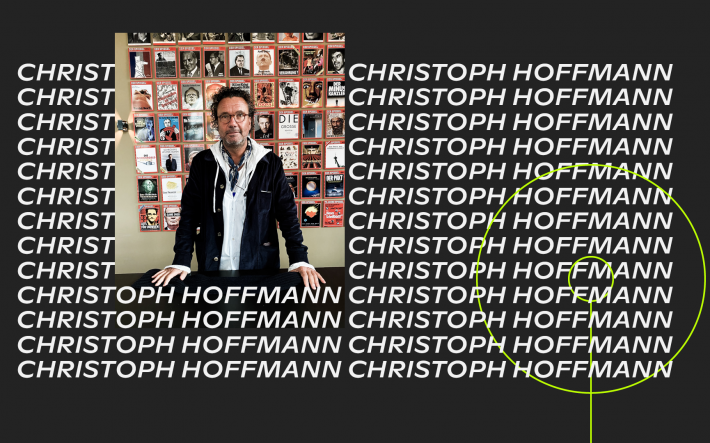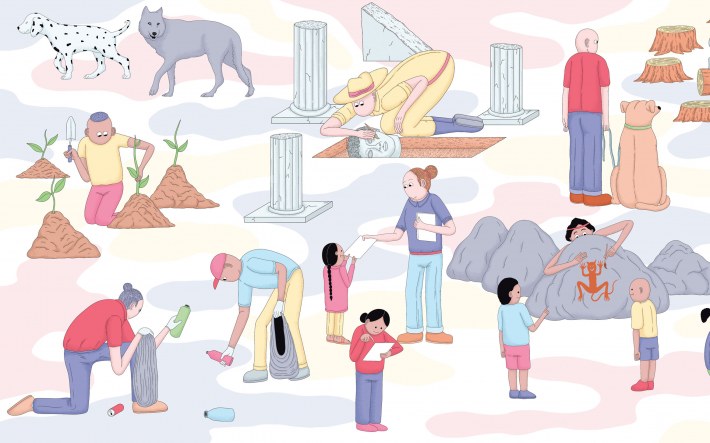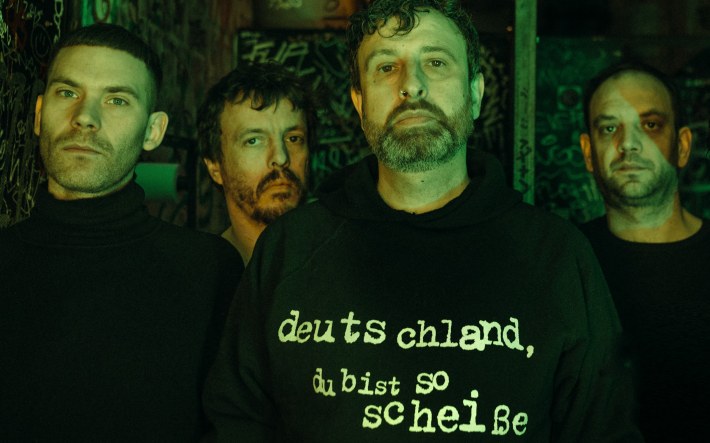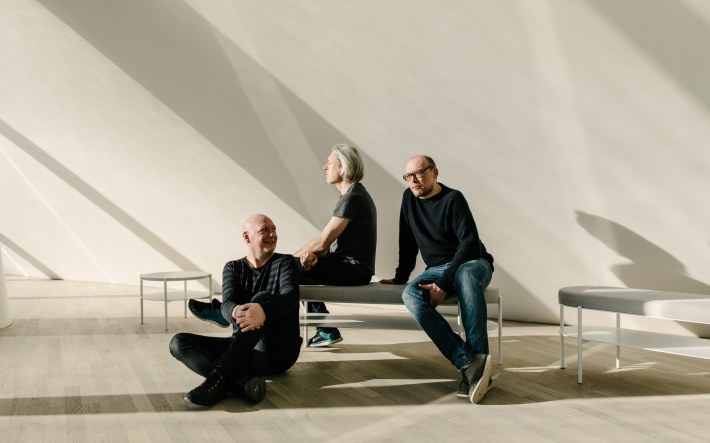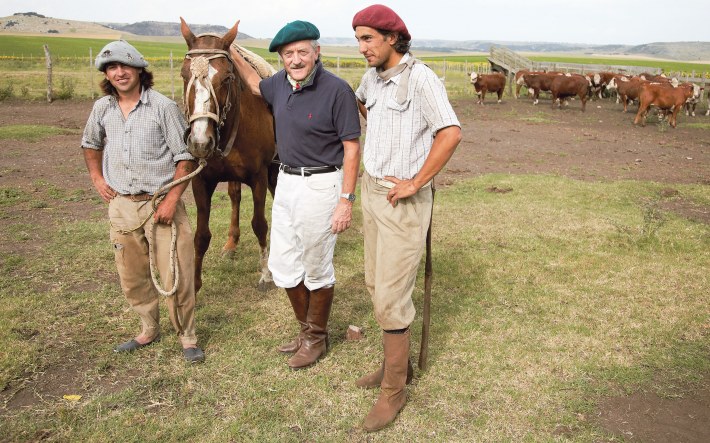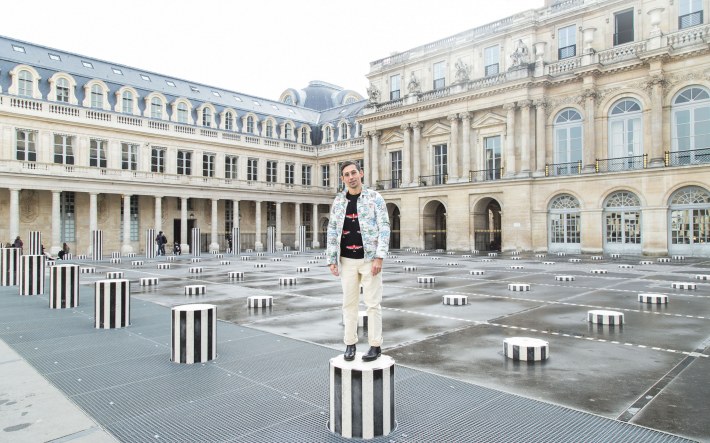Artist in Residence - Louis Schmidt
The artistic heart of the 25hours Hotel Langstrasse is the hotel’s studio on the ground floor. It is a workspace for international and domestic artists, who produce and prepare for their exhibitions, presentations, or collaborations on-site.
Louis Schmidt stayed here three weeks in June 2018. He has lived in L.A., California for around ten years. His journey to the hotel studio at the 25hours Hotel Langstrasse was long and meandering. He has visited Switzerland many times, including to visit an old school friend, Rich Bott. It was through him that he met Esther Eppstein, who curates the hotel’s art studio in Zurich. In 2017, Rich Bott also did a residency at the hotel studio and told Louis all about the project and showed him the hotel. Louis was immediately excited about the prospect of working there. When it became apparent that he would travel to Basel to work at Art Basel as an art technician and to have a table with his artwork and publications in the I Never Read Art Book Fair, Esther invited him to become the Artist in Residence at the hotel’s studio. He will now be working there for 3 weeks.
In L.A, Louis’ creative work is often structured by external circumstances. For instance, he works as a freelancer at a museum. Those are “normal working days” from 9-5. On those days, he doesn’t go to his studio to work until the evening – from 8/9pm until late at night. If an exhibit is coming up, the studio work may take even longer. He takes part in three or four book fairs each year, and he frequently exhibits his artwork. To him, preparing for this kind of exhibit means working in a targeted, intensive, and well planned way. There is a clear concept and structure behind this process. Sometimes this work can even become a little dry since he knows exactly what he is doing and what is going to happen. Prior to that, each idea must mature to a certain point before he can get to work. The really exciting part is finding and developing this idea. That can sometimes be even more exciting than the actual work that follows.
As long as he doesn’t need to produce something for an exhibit, he works as freely as possible in the studio. He takes great care to ensure that he has this freedom: as a freelancer, he takes time for himself as he needs it. Where possible, a month of work will be followed by a “free” month of studio work. The weeks in which he has neither an exhibit in L.A. to prepare for nor any work to do at the museum are also used for travel, often also in connection with a job. He often works abroad for various exhibits, for example in Hong Kong or Tokyo, and he uses these work trips as starting points for new discoveries.
He most enjoys exploring these places on foot. He wanders aimlessly, in a positive sense, which brings him to places that he wouldn’t otherwise have found. In Tokyo, he simply got out and about every day: he chose a direction and followed it as far as he could. 12km to the north. Or 7km to the east. Until it got dark. For him, exploring on foot is the best way to see a place, as he can simply stop to look at something more closely and enjoy the moment. He does this to take a break, to dedicate himself to his artworks.
Louis is actually always drawing or taking photographs. Both have become his way of keeping a journal, so to speak. In this way, he can capture moments and thoughts. This also increasingly affects his travels. Consciously or subconsciously, he is always looking for certain patterns. Stairs, for example: He has taken tons of photos of people on stairs and made them into small series, comprising photos from Tokyo, L.A., New York, Hong Kong, and Mexico City. That can also be restricting in a certain way. Ten years ago, when he started taking photographs, he explored more freely, capturing different interesting moments. Today, he looks for the special moments that are more his thing.
“His thing”? In fact, he doesn’t wish to limit himself, but he certainly focuses on specific topics: directions keep cropping up in his artworks. Like the stairs, for example, which are photographed or drawn from various perspectives. It’s all about ascending and descending. “Upwards” is a direction that always appears in human life, he observes. It is the direction of your life path, like a ladder to be climbed. He observes such patterns in human behaviour, thought, and movement. He comments on this concept with his artworks. He is interested in “upwards” in order to critique lives and societies structured around hierarchical systems - religious belief, social “ladder” climbing and others.
He often picks up on conversations, which are then reflected in his pictures. Everything he hears influences his art. The words and sentences float around in his head for a while before they turn into something he can use. Or a sentence gets stuck in his mind and he works “backwards”: the sentence is made into an artwork. He says himself that words are the most important part of his work. Before he even begins to paint or take photographs, he has written poems and stories. Once he has begun to visualise his art, the words have also been given voices and become a part of the images themselves, and not only as names for his exhibits and artworks.
As he actually always finds himself at some point in the creative process, he has made an astonishing amount of artworks. In the recent weeks spent at the hotel studio in Zurich, he has already painted over 100 pictures and taken 500 photos. In Japan, he tells us, he took 15,000 photos in just two weeks. These were made into three art books, each with 25 pictures. Everything else ended up on an external hard drive. At a rough estimate, it holds hundreds of thousands of pictures from 15 years of practising photography. The hardest part of his job is sitting in front of his laptop and rooting through the images for hours on end before making a selection and editing the pictures. There, you can see the kind of chaos he has created. It is a learning process: you ask yourself why you have taken so many photos, and why exactly they feature a recurring pattern. Like the people going up and down the stairs. But: after more than 10 years, he can now identify himself and his art. He explores what he does and why.
It can also transpire that an artwork is left unfinished. This may be because it developed in an unexpected direction, or because it simply does not work. Such artworks are thrown away. However, it can sometimes also happen that you get started and end up at a completely different place than planned. It is a very exciting process for him. He has two Bachelor degrees from CU Boulder, one in art history and the other in studio Art. He also has a Master’s degree in Studio Art from UC San Diego. He works on exhibits, and all of his friends are artists. You may feel that you know everything and have seen it all. However, when something new happens, something unexpected, it gets exciting. That happened recently at the hotel studio, as well: he drew on black printmaking paper in gold. He doesn’t normally use gold paint in his art, so that was something new in itself. When a little piece of fluff landed in the paint, he carefully tried to remove it, accidentally scratching off a bit of the paint. The black of the printmaking paper came through. Then, he came up with the idea of painting backwards, so to speak, i.e. taking the paint away. As such, he created something new; unintentionally, unplanned, accidentally, and indirectly. Sometimes you find yourself on a path to things you previously had no idea about and they are simply amazing. Just like his residency in the hotel studio.
http://bridgethevoid.blogspot.com/
The artistic heart of the 25hours Hotel Langstrasse is the hotel’s studio on the ground floor. It is a workspace for international and domestic artists, who produce and prepare for their exhibitions, presentations, or collaborations on-site. The hotel’s studio is occupied by guest artists for 12 to 14 weeks, each year. A residency can last from one to four weeks. Each artist leaves one of their artworks behind at the hotel at the end of their residency. The art collection can be viewed at the hotel, free of charge. The studio is curated and managed by Esther Eppstein, an artist and curator from Zurich.






